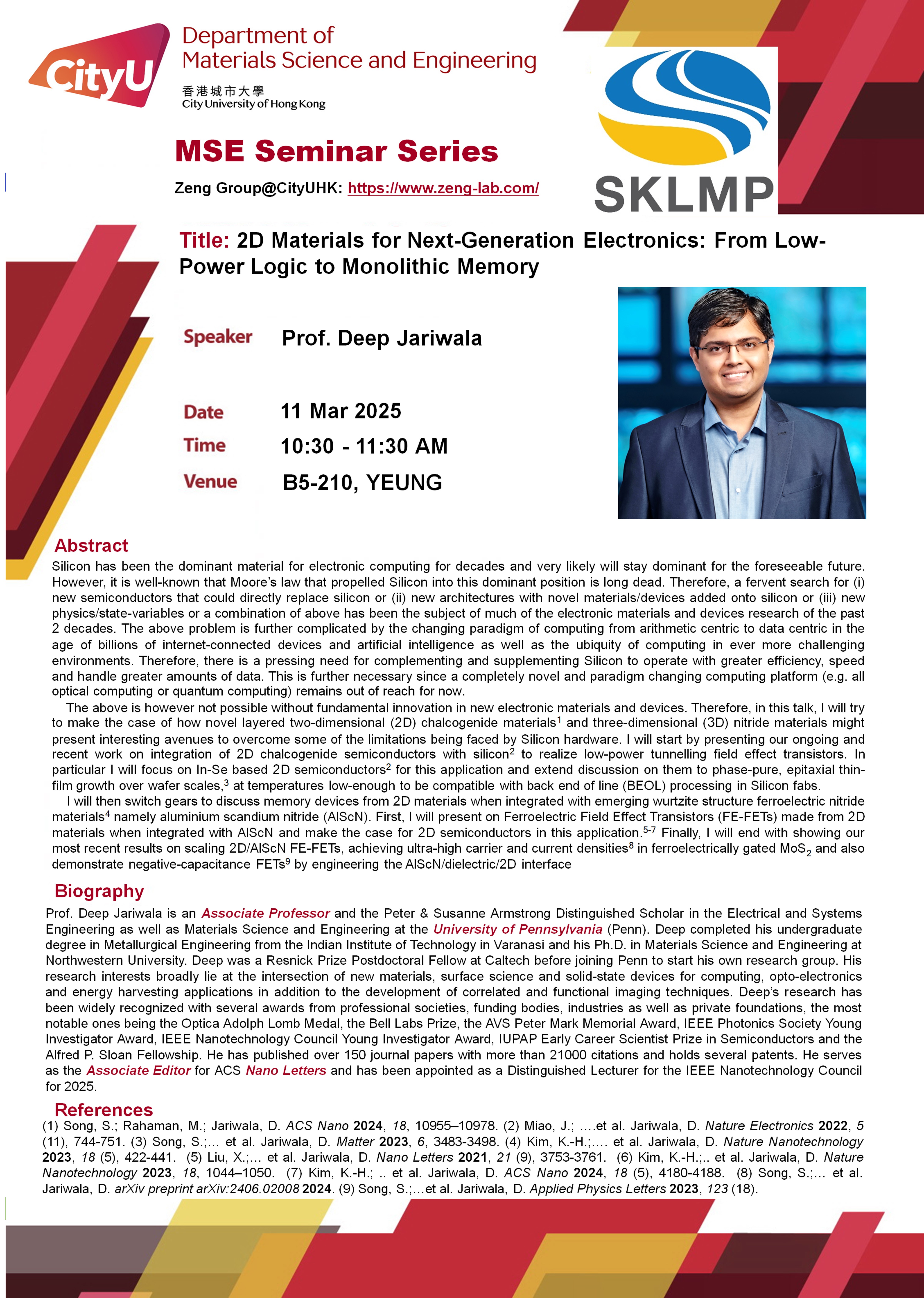
MSE Seminar – Prof. Deep Jariwala (11 March 2025)
| Title: | 2D Materials for Next-Generation Electronics: From Low-Power Logic to Monolithic Memory |
| Speaker: | Prof. Deep Jariwala University of Pennsylvania, USA |
| Date: | 11 March 2025 (Tuesday) |
| Time: | 10:30 – 11:30 am |
| Venue: | B5-210, Yeung Kin Man Academic Building |
| Abstract: |
Silicon has been the dominant material for electronic computing for decades and very likely will stay dominant for the foreseeable future. However, it is well-known that Moore's law that propelled Silicon into this dominant position is long dead. Therefore, a fervent search for (i) new semiconductors that could directly replace silicon or (ii) new architectures with novel materials/devices added onto silicon or (iii) new physics/state-variables or a combination of above has been the subject of much of the electronic materials and devices research of the past 2 decades. The above problem is further complicated by the changing paradigm of computing from arithmetic centric to data centric in the age of billions of internet-connected devices and artificial intelligence as well as the ubiquity of computing in ever more challenging environments. Therefore, there is a pressing need for complementing and supplementing Silicon to operate with greater efficiency, speed and handle greater amounts of data. This is further necessary since a completely novel and paradigm changing computing platform (e.g. all optical computing or quantum computing) remains out of reach for now. |
| Enquiries: | mse@cityu.edu.hk |